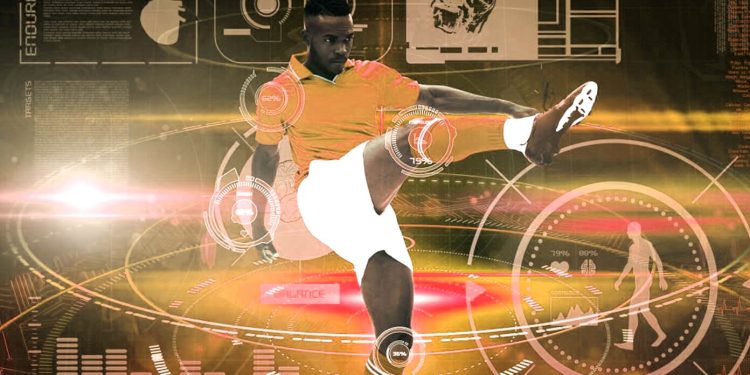Technology has a massive influence on practically every element of our community. With its help, Individuals can get knowledge more rapidly, interact more intelligently and efficiently, and generate ideas. From healthcare to sports, technology has influenced every aspect of life and every sector.
As we overcame the significant obstacles of the coronavirus outbreak, the sport returned to play in 2021. Technology breakthroughs are poised to blow up the sporting sector in 2022, revolutionizing every facet of it.
Continue reading to discover the most prominent technology advancements in sports, including fan engagement, player performance, and stadium experience.
Top Technological Trends Defining the Future of Sports Industry
With the help of technological advancements, the sports industry will keep evolving. Let’s find out how innovations are influencing and transforming the sports sector.
AI and ML
The sports world is evolving as a result of data and AI. Since most sports generate massive volumes of data, modern ML and data mining approaches significantly influence sports analytics.
Professional team members are increasingly hiring machine learning specialists for their proficiency. They assist in the promotion and ticket sales and players selection, assessment, and tournament decisions. Technology firms are stepping up to meet these new difficulties in the developing field of sports analytics. Recently, Adobe has launched an AI-powered intelligence platform for football fans.
By 2025, the industry for sporting analytics is estimated to be worth over $4.6 billion since it aids several sports companies in various ways. Analytics are becoming more common in the sports industry, and this trend will only continue as the amount of data available grows.
Platforms for Cloud-Based Analytics
The development of athletics is data-driven, and with cloud-based analytics solutions, more companies can administer their demands with versatility, reliability, and sustainability.
The modern cloud-based tools give critical data to managers and coaches. These data include aggregated and displayed analytics and forecasted outcome modeling to track and enhance individual and collaborative efforts. Coaches may monitor patterns while integrating players’ pulse rate, pace, and acceleration and continually improve performances.
The ability to quickly ramp up or down processing capabilities as needed affects the cost structure for content marketing for these enterprises. The industry is improving by assembling real-time dashboards to assist in customized training for enhanced healing and injury reduction.
Mixed Reality and Virtual Reality
VR is currently being used in the global sports industry to create events that immerse spectators in their journey. NextVR, a VR business, has partnered alongside NBA Digital to live stream NBA activities in VR.
Virtual reality technology has indeed started to influence the sports business. Astute sports organizations have begun to employ it to aid in practice and injury prevention for their athletes. Nursing professionals are now learning anatomy virtually, which allows athletes to become used to high-stress scenarios in scenarios to increase performance.
How is Emerging Technology Assisting in the Removal of Sporting Industry Barriers?
Emerging technology is playing an integral role in smoothening the working of the sporting sector. Here’s how this is happening:
Athletes Empowerment
Since the beginning of the global sport, teams and agencies have had the freedom to use players as pawns, determining their every step. Even though agents may be highly advantageous to athletes, most have no control over their job.
Companies may offer athletes the freedom to seek additional revenue sources that really can pay off even after they retire by providing them with technological resources. Giving players control over their destiny can help relieve the strain on antiquated systems while allowing access to chances generally reserved for a pro sportsperson.
Boosting Fan Interaction
In sports, supporters are crucial to the sector’s survival. Due to the Covid-19 crisis, fan participation has become incredibly hard. Fans returning to live sporting events is a primary objective for all clubs, regardless of league. Before the outbreak, corporations were trying to improve fan engagement initiatives to encourage people to get out of their couches and visit the stadium.
Fans nowadays aren’t only employing cutting-edge technology to enjoy sports. They’re also stepping up in ways to recognize and reward businesses that provide a superior tech-enabled experience. Fans’ experiences are being enhanced by present technology, increasing engagement.
Increasing Wearables’ Usage
Wearable technology is gaining traction among sports franchises, impacting coaching choices, players’ safety, and performance. These gadgets can be built into sporting clothing, affixed to an individual’s body, or placed straight in sports goods.
In-Game Technology and Tracking for Specific Sports
Technology has found its way through every sporting activity. Discussed below are a few of the many:
Basketball
Referees in basketball employ instant replay technology to understand better what is happening in all instances. It allows them an additional chance to make more accurate decisions and eliminate errors committed by human negligence.
Swimming
Swimming pools can be equipped with linked touchpads to inform authorities of the precise moments in which each swimmer crossed the finish line of the competition. It helps make the swimming events fairer and reduces the risk of lower standards due to human mistakes.
Hockey
In hockey, innovation is being employed to develop shock-absorbing helmets that will help athletes avoid significant neck and head injuries. Not only will players’ well-being be maintained, but their professional careers may also be prolonged because of fewer injuries, which could diminish their overall playing time.
Summing Up
While it may not seem obvious, technological advancements have significantly influenced sports. Many operations are now simpler and faster, and as a result, the sector has witnessed a rise in awareness and income. Today, technology plays a critical role in all aspects of the sporting world, from player recruiting to training and audience engagement, marketing, and management.








